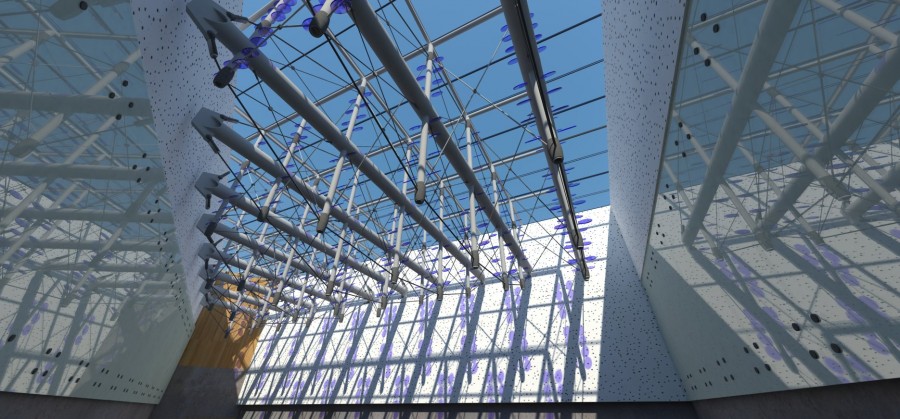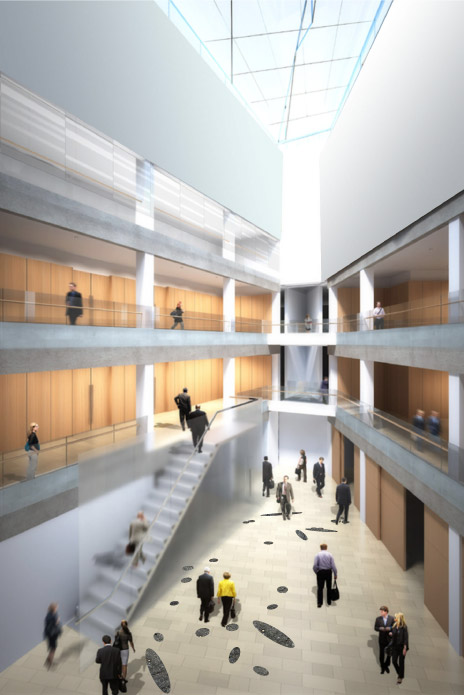Rare Earth and Light Year, 2014
Rare Earth
The new chancery of the Canadian Embassy in Moscow will not be a new Canadian building, but a repurposed Russian one. We want our embassies to feel genuinely Canadian. Indeed, we perceive of them as being Canadian territory on foreign soil. But how to make this embassy feel Canadian, if we know it is a former Russian facility? My approach was to give the building an innate Canadian essence. I proposed to set large pieces of Canadian magnetite into the floor main atrium. The magnetic force emanating from the magnetite is extremely low, but once someone becomes aware of it, they will never be able to conceive of the building as anything other than Canadian. In short, it fundamentally changes how people will perceive the building. The arrangement of the shapes on the atrium floor is dictated by the locations of magnetite deposits in Canada; however, without an outline to indicate the border of Canada, the arrangement will appear simply intentional and abstract. The Canadian Sulphide Magnetite will be quarried from the Sherman Mine in Temagami, Ontario. Although the magnetism of the rock is essential for the concept, it just so happens that the magnetite from this mine is beautiful. Striated with black, a lustrous grey silver and streaks of red, the inlay should be eye catching as well.
Rare Earth is a design for the atrium floor of the new chancery building of the Canadian Embassy in Moscow. Image Credit: KWC Architects-Diamond Schmitt Architects Inc, Architects in joint venture. The rendering of the atrium floor has been altered by the artist to illustrate the concept. 
Selected magnetite boulder at the Sherman Mine inTemagami, Ontario
Light Year The concept for light year is to utilize the daily and yearly changing light conditions in the main atrium space of the Chancery as a way of reinforcing a sense of place and time. While the design of the skylight continues to evolve, the essential plan is to deploy an array of dichroic glass within the support structure for the skylight. The angle of the light passing through the dichroic glass and as well as ones physcial location in the building will change the way the glass, light, and cast colours are perceived. Being concious of the time and light will remind users of the similar latitudes Russia and Canada share and the time and distance between Moscow and Ottawa. The angle of the dichroics will be set to achieve a maximum effect at the time of the vernal and autumnal equinoxes.  Rendering of the Light Year concept by studio g+G inc, architect.
Rendering of the Light Year concept by studio g+G inc, architect.
